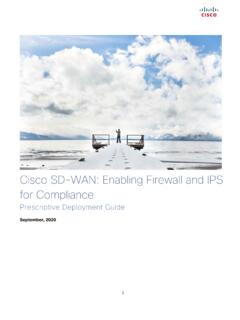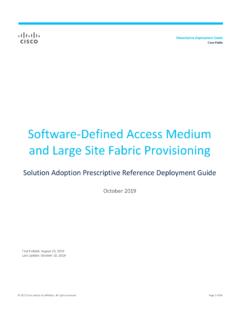Transcription of Understanding Hypersonic Weapons: Managing the Allure …
1 Shannon Bugos and Kingston ReifAn Arms Control Association Report September 2021 Understanding Hypersonic Weapons: Managing the Allure and the RisksAbout the AuthorsShannon Bugos is a research associate at the Arms Control Association, where she focuses on nuclear disarmament, arms control, and Hypersonic weapons and emerging Reif is the director for disarmament and threat reduction policy at the Arms Control Association, where his work focuses on nuclear disarmament, deterrence, arms control, preventing nuclear terrorism, missile defense, and the defense authors would like to thank the Arms Control Association s Executive Director Daryl G. Kimball for his assistance in reviewing this report and Julia Masterson, research associate, for her copy edit.
2 Special thanks to Allen Harris for the report s layout and design. James Acton, Michael Klare, and Sam Wilson provided thoughtful feedback on this report. The authors would also like to acknowledge the German Federal Foreign Office and the European Leadership Network for their support. The authors are responsible for the content of the report, and the statements made and views expressed do not necessarily represent the views of the Arms Control Association s Board of PhotoAirmen from the 912th Aircraft Maintenance Squadron secure the AGM-183A Air-launched Rapid Response Weapon (ARRW) as it is loaded under the wing of a B-52H bomber during a test at Edwards Air Force Base, Calif.
3 , on Aug. 6, 2020. (Photo by Air Force) Arms Control Association, September 20211 Understanding Hypersonic Weapons: Managing the Allure and the Risks2 Executive Summary4 Section I: What are Hypersonic Weapons?8 Section II: Who is Developing Hypersonic Weapons and Why? The United States Russia China15 Section III: Hypersonic Weapons and Strategic Stability Hypersonic weapons can prompt an escalation of a conflict due to target ambiguity. Hypersonic weapons can prompt an escalation of a conflict due to warhead ambiguity. Hypersonic weapons can prompt an escalation of a conflict due to their high speeds, which can lead to a reduction in response time and the potential for more successful strikes against time-critical targets.
4 Hypersonic weapons risk further upsetting the already tense offense-defense interrelationship and perpetuating a competitive cycle of one-upmanship. Hypersonic weapons could exacerbate the stability risks posed by other advancing technologies of concern, such as counterspace and cyber Section IV: Hypersonic Arms Control Options Confidence-Building Measures Bans Limits Unilateral Measures Getting to the Negotiating Table24 Section V: Recommended Action Items for Congress28 Endnotes TABLE OF CONTENTS2An Arms Control Association ReportExecutive SummaryThis debate has gained increased attention in recent years as the United States has poured billions of dollars and plans to pour billions more into accelerating the development of Hypersonic weapons and as China and Russia make headway in developing and deploying their own such weapons.
5 The Department of Defense is funding no less than eight prototype Hypersonic weapons programs with the aim of fielding an initial capability of at least some of those by 2022 amid a renewed emphasis on competition with Beijing and Moscow. Russia fielded the Avangard, a Hypersonic glide vehicle, in 2019 and is developing an air-launched Hypersonic missile (the Kinzhal) and a sea-launched Hypersonic cruise missile (the Tsirkon). China displayed a ballistic missile designed specifically to carry a Hypersonic glide vehicle (the DF-17) during its 2019 military parade. While Washington is only pursuing conventional Hypersonic weapons at this time, Beijing and Moscow appear to be seeking not only conventional but also nuclear or dual-capable Hypersonic capabilities.
6 Thus far, the Defense Department has offered varying and at times conflicting rationales for pursuing Hypersonic missiles. It has not offered a clear concept of operations for the deployment of the weapons or a detailed explanation for why alternative military capabilities are not adequate to meet mission requirements. Other important details about the department s plans for the weapons are yet to be determined, including the projected costs of the missile systems under development and production quantities. Meanwhile, the Pentagon appears to be paying less attention to the ways in which Hypersonic weapons could lead to new escalation dangers in a conflict, including to the nuclear level, and contribute to a burgeoning arms race with all sides rushing the deployment of the new weapons lest they be perceived as falling behind the others in mastery of the new technologies involved.
7 The Pentagon s current pedal-through-the-floor development approach to Hypersonic weapons enjoys strong bipartisan support in Congress. Most lawmakers seem convinced that the United States must have Hypersonic weapons simply because China and Russia are pursuing them. For its part, the Biden administration appears likely to continue many, if not all, of the prototyping efforts begun under the Trump administration as part of its prioritization of Depending on who you talk to in Washington, DC, defense and national policy circles, Hypersonic weapons are super-duper missiles poised to revolutionize warfare because they are impossible to defend against. Others say they are but the latest in a long line of overhyped weapons systems and are relatively easy to defend against because they actually fly more slowly as they near their target than ballistic missiles with comparable ranges.
8 Some claim that Hypersonic weapons will strengthen conventional deterrence by leveling the playing field with adversaries who are also developing and have already deployed Hypersonic weapons. Still others argue they will create instability between nuclear-armed nations by increasing fears of a disarming attack and by fueling a dangerous arms Hypersonic Weapons: Managing the Allure and the Riskslong-range precision fires to strengthen conventional deterrence against China and the rush to field Hypersonic weapons merits a more critical examination by the Biden administration and Congress given the many unanswered questions about their rationale, technical viability, cost-effectiveness, and escalatory risks.
9 This report outlines the scope of these unanswered questions, details the underappreciated risks to stability posed by the weapons, assesses the viability of arms control as a tool to reduce the risks, and suggests recommended action items for Congress to better its Understanding about the Pentagon s plans for the weapons, eliminate potential redundancies in weapons capabilities, and mitigate stability risks. Section I of the report describes the characteristics of Hypersonic glide vehicles (HGVs) and Hypersonic cruise missiles (HCMs), some of the technical challenges the weapons have yet to overcome, and how both proponents and skeptics view the benefits and downsides of the weapons relative to existing missile capabilities.
10 Section II provides an overview of the current Hypersonic weapons programs in China, Russia, and the United States, along with a review of each country s stated motivations to the extent they can be ascertained for pursuing the weapons. Section III examines the possible risks Hypersonic weapons pose to strategic stability. Such risks include those emanating from target and warhead ambiguity, a reduction in response time, the potential ability to target mobile missiles, arms racing, and exacerbating threats posed by other emerging technologies. Section IV outlines how arms control might be applied to Hypersonic weapons to mitigate the risks they pose and to curb unconstrained competition.











